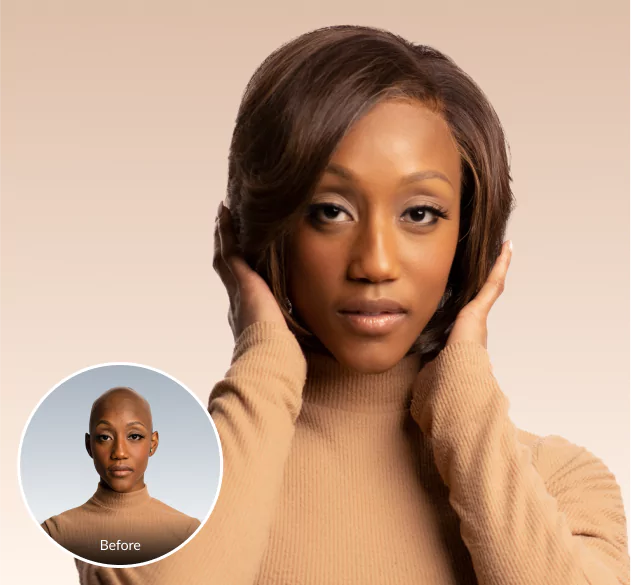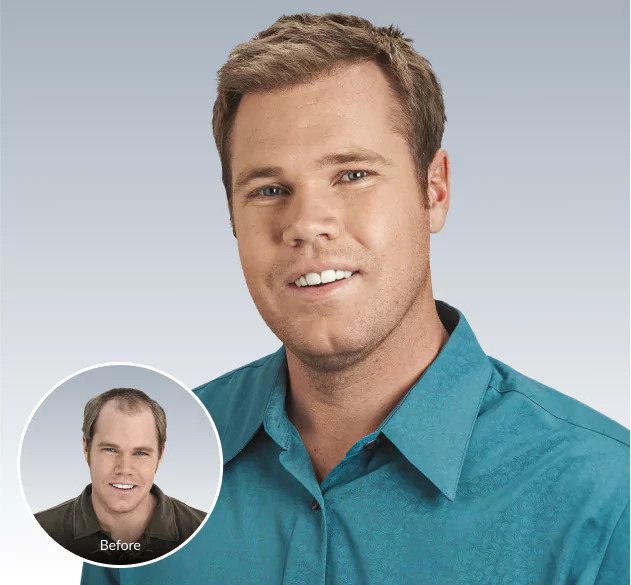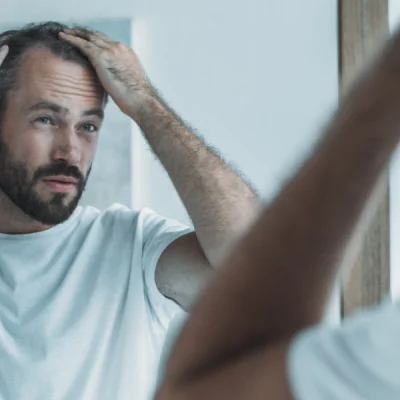Learn About Hair Loss | Mens Hair Loss
Male Pattern Baldness and Hair Loss in Men
Get the Facts About Hair Loss in Men
of men start losing hair before the age of 50
of men experiencing hair loss see first signs before age 21
of men’s hair loss is caused by male pattern baldness

Male Pattern Baldness? Blame Genetics
Come see a Hair Loss Specialist to find out which of our cutting-edge solutions is right for you.
What Else Causes Hair Loss in Men?
Aging can cause hair to thin. Over time, more hairs transition into the resting phase of hair growth while the remaining hairs become shorter and thinner. This process is called involutional alopecia.
Certain medications can lead to hair loss, including blood thinners and medicines for heart problems, blood pressure, and depression.
Scars left from accidents, burns, and surgery can prevent hair from growing.
Numerous medical conditions can cause hair loss, including thyroid disease and autoimmune diseases like lupus.
The trauma surrounding life events, such as losing a loved one, can cause hair to fall out.
Some chemotherapies and radiation therapies can cause your hair to fall out.
A lack of protein and iron in your diet can contribute to hair loss, as can eating disorders like bulimia and anorexia.
The information provided in this page is general in nature and widely available. All content is provided for informational purposes. The exact cause of hair loss can only be determined by a medical professional.

Take Our Hair Loss Quiz and See What’s Possible for You
Answer a few questions to get a quick assessment and set yourself up for a discussion with our Hair Loss Specialists.
When did you first notice your hair loss?
Where Do You Fit on the Norwood Scale?
The Norwood (or Hamilton-Norwood) Scale is one of the leading ways to classify male pattern baldness. It’s an easy-to-reference guide to help men understand the progression of their hair loss. This scale groups men’s hair loss into seven classes, from no or minimal loss to advanced balding.
Stage 1
Stage 2
Stage 3
Stage 4
Stage 5
Stage 6
Stage 7
A Difference You Can See and Feel

Finding Freedom and Confidence with Xtrands+®

Supportive Care and a Hair Replacement Solution That Works

HairClub FAQs
Hair loss doesn’t have to be overwhelming. HairClub is a place of shared experiences and specialized training in proven hair loss solutions. You don’t have to spend one more moment worrying about hair loss. Many of our compassionate, supportive Hair Loss Specialists are also HairClub clients. More than 600,000 clients have chosen HairClub for their custom hair loss solutions for 46 years and counting. Now, it’s your turn. Get to know HairClub. Your first consultation is on us.
HairClub® celebrates all types of hair with solutions for everyone, no matter their age, ethnicity, hair type, or level of hair loss. We work with hair of every color, length, curl pattern, and texture. Because our team of Hair Loss Specialists is trained in hair loss, they appreciate and understand the care required to prevent traction alopecia, a common form of hair loss in Black hair. For every stage of hair loss, HairClub has a solution for every hair type. African American HairClub clients love Xtrands+®, our hair replacement system that functions like your naturally growing hair.
Thinning hair is caused by a number of factors. They include genetics, age, poor nutrition, illness, and as a side effect from treatments for medical conditions. Having more than one contributing factor can cause more severe hair loss. Your HairClub® Hair Loss Specialist can recommend the right solution for your stage and type of hair loss.
It’s perfectly normal for the average person to shed between 50 to 100 hairs a day. However, by the time you notice hair loss with the naked eye, the affected area is already experiencing as much as 50% hair loss. Consult your local HairClub® Center immediately at the first sign of hair loss to keep the hair you still have and prevent future hair loss. We can help you determine the level of hair loss and together find the best solution.
Get Our FREE Hair Loss Solution Guide
We can email you our guide with more info on our treatment options.




